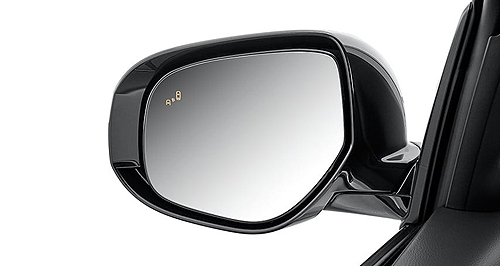Make / Model Search
News - LotusActive safety technology not required: Lotus AusSafety first: Although Lotus cars miss out on active safety features such as the autonomous emergency braking and lane-keep assist, the brand argues its drivers are more engaged on the road. Lotus claims owners do not want blind-spot and lane-keep monitors6 Mar 2018 ACCORDING to Lotus Cars Australia chief operating officer Richard Gibbs, customers of the British lightweight sportscar brand do not want several active safety technologies including blind-spot and lane-keep monitors that take away driver responsibility. As global car-makers rush to introduce self-steering and autonomous emergency braking (AEB) technology to assist a driver who has drifted out of a lane or failed to detect a potential collision, Mr Gibbs argued that the Lotus philosophy of encouraging its drivers to be aware and engaged could be the safer option. “Lotus will obviously build their cars to meet compliance requirements of whatever regions they are needing to sell into,” he started. “(However) Lotus owners are looking for, as much as possible, a totally engaging drive experience with a minimal number of interactions and interruptions from technology. And it’s not to say that AEB and the like aren’t wonderful inventions. “But I could also … say we need those things because as drivers, our cars are doing so much more for us that we are actually losing the skills that our forebears had when it came to driving a car and to be aware of what is going on around you on the road. “Simple things like looking 300 metres down the road because you don’t have ABS, so you know it’s going to take longer to stop. And I think that Lotus community, because they are used to driving vehicles that don’t have a lot of aids, they hold themselves in a high regard with regards to their driving skills.” Compared with a Porsche 718 Cayman, the Lotus Exige is not available with features such as adaptive cruise control, blind-spot monitoring, AEB or even a reversing camera. Mr Gibbs said that even with a sportscar’s limited visibility out the back window, it only heightened a driver’s awareness of their surroundings. “People say, ‘oh they are so small and you can’t see out the back’ and all this, (but) I think we are very much about keeping our cars safe but engaging,” he continued. “You can see out enough if you are engaged in the driving moment, and these guys, they know where to set their mirrors on these cars so that there are no blind spots, so we don’t have blind-spot monitoring, we don’t need blind-spot monitoring because these guys are totally immersed in what they are doing with their driving. “For them, driving a Lotus is about driving. It’s not about listening to what’s coming through the radio or having the sat-nav telling you where you need to be doing your next turn, they are just so immersed in the whole driving experience that they are actually switched on, they are really aware of what is going on.” The Lotus Cars Australia COO also questioned the race among car-makers to create the first fully autonomous car – which has been linked to the aim of reducing global road accidents to zero – rather than producing better drivers. “I think ‘why is there such a thing now around the push towards when are we going to get our first autonomous car?’” he pondered. “To me that just speaks volumes of, as a society, we are looking for our cars to protect us rather than us protect ourselves when we go to drive a car. The reality is, with a car on the road, a great deal of responsibility is required when you jump behind a wheel of a car. “We run the risk of making cars get to a point where people don’t feel like they are responsible anymore and I am sure legislators at the moment are grappling with, well, what happens when an autonomous car has an accident? Is it the fault of the car-maker? Is it the fault of the owner? Where do you draw that line.” Mr Gibbs did, however, concede that an expanded Lotus range, which would have to incorporate the demands of several market requirements, could see active safety technology ultimately adopted anyway. Chinese car-maker Geely last year purchased a 51 per cent controlling stake in Lotus Cars, with indications that it will substantially increase research and development (R&D) funds to create a new generation of Elise, Exige and Evora sportscars, plus an SUV that could be the first recipient of an active safety boost. “If Lotus is required through law to put some of these aids in the cars then we will have no choice but to accept it,” he said. “But do we need that? Is our buyer community saying to us, ‘really we need to have autonomous braking or I need in-built sat-nav and reversing camera’? No, they are not telling us that at all. “The vast majority of Lotus community are quite happy with the cars and what they have got, and what they haven’t got in their current form.”  Read more |
Click to shareLotus articlesMotor industry news |












Facebook Twitter Instagram